<< Previous | Displaying results 6651-6675 of 6772 for "" | Next >>
Joseph Roger Cheraki poses in the uniform of an Algerian soldier, ca. 1935. Joseph met Elizabeth Seiberl, and they married on October 27, 1936, in Algiers. In 1941, Joseph lost his job, their son Alfred was expelled from school, and they later had to sell their house. In 1942 Joseph, Elizabeth, and their sons Alfred and Jacques had to wear the yellow star. Boys threw stones at Alfred and Jacques. Joseph was sent to a forced-labor camp for a few months. He was eventually released. In 1946 the family…
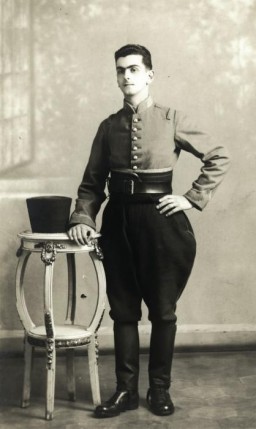
A group of Tunisian schoolgirls wearing aprons. Nadia Cohen is in the first row, third from the left. Tunis, Tunisia, ca. 1930-1935. Nadia Cohen was born on January 17, 1924, in Tunis. Nadia's parents came from Orthodox households, but her father left the yeshiva at the age of seven to study Italian, Arabic, and accounting in a French school. In 1938, Nadia was sent to a boarding school in France. She returned home for a visit in the summer of 1939 but could not return to school that fall due to the…
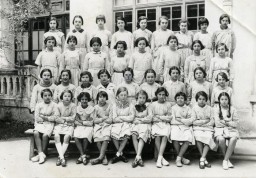
Terese Cohen, a Tunisian Jewish women, poses with her two children, Nadia and Marcel. Immediately after the Allied landings in Algeria and Morocco, the Germans occupied Tunisia. After the occupation, an SS officer came to the Cohen's house and confiscated everything leaving only the table and chairs for the Germans to use. They gave the family 24 hours to pack and leave and then expropriated the home to use as a barracks for soldiers.
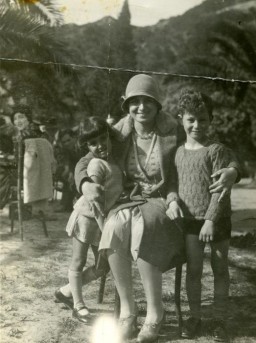
As a German soldier looks on, Tunisian Jews are forced to sweep the street and move a wooden crate on a hand cart. Tunisia, 1942-43. Photograph courtesy of Bundesarchiv, German Federal Archives
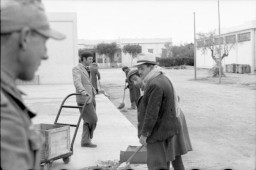
Sami Dorra working at dam construction in the Im Fout labor camp. The camp was approximately 59 miles southwest of Casablanca, and housed a group of foreign workers. Im Fout, Morocco, 1941-42.
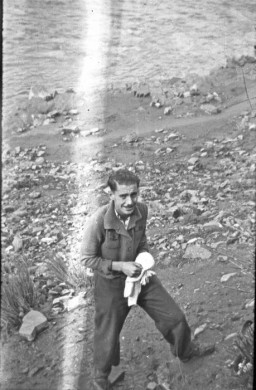
An unidentified worker walks by the railroad tracks at the Im Fout labor camp in Morocco. Living conditions were harsh in the camp, and many of the workers fell ill with typhus. Im Fout, Morocco, 1941-42.
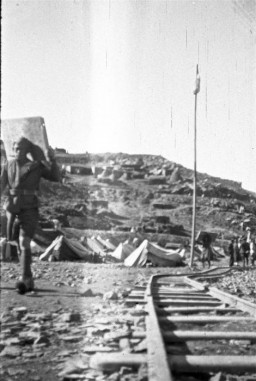
View of the dam being built by forced laborers from the Im Fout labor camp in Morocco. Photograph taken 1941-42.
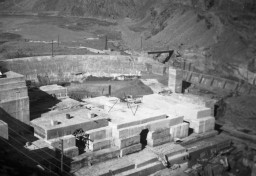
A German Jewish prisoner named Rosenthal pushes a cart in the stone quarry of the Im Fout labor camp in Morocco. The camp housed a group of foreign workers, many of whom fell ill because of poor living conditions. Im Fout, Morocco, 1941-42.
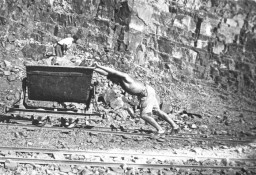
Close-up portrait of two prisoners in the Im Fout labor camp in Morocco. The camp was approximately 59 miles southwest of Casablanca, and housed a group of foreign workers. Many of the prisoners fell ill because of poor living conditions in the camp. Im Fout, Morocco, 1941-42.
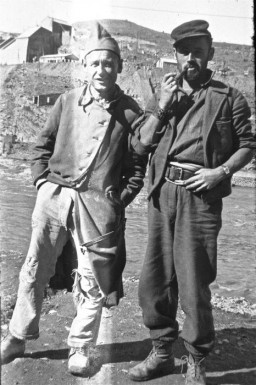
This photo was taken during the journey of Bluma (Kleinhandler) and Zygmunt Godzinski from Poland to Argentina. Casablanca, Morocco, 1946.
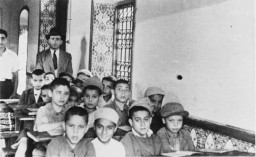
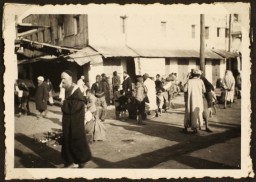
Children stand at attention during a flag raising ceremony at the Ayindram Betar summer camp. Tunisia, North Africa, 1946.
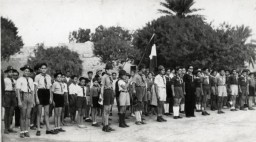
Prisoners at forced labor building airplane parts at the Siemens factory in the Bobrek labor camp, a subcamp of Auschwitz. February-June 1944. David Stein is pictured in the row to the right, with his back to the camera; his brother Charles is in the same row, fourth from the left, facing the camera.
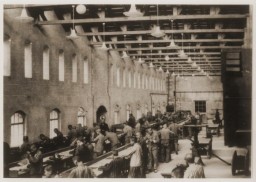
On January 20, 1942, the villa was the site of the Wannsee Conference.
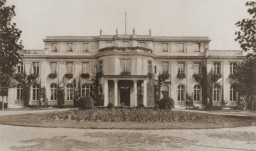
Group portrait of Jewish friends at a swimming pool in Kalocsa, Hungary, 1930.
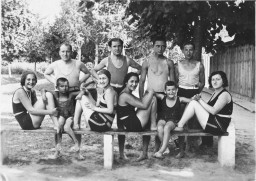
Rohingya walk into a section of the Balukhali refugee camp in Bangladesh, September 2017.
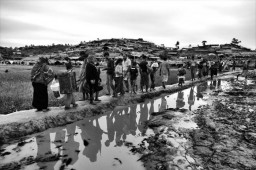
In Poznan, ethnic German recruits to the German army swear allegiance to Adolf Hitler. January 1940.
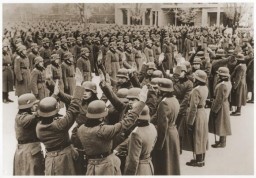
Troops take the oath of obedience to Adolf Hitler. Germany, January 1939.
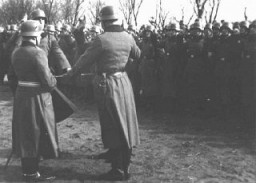
Poster for a meeting and speech about the Jewish Bolshevik threat against Germany sponsored by the local Nazi Party of East Hannover. Depicted is a silhouetted caricature of a Jewish man’s head in left profile, with a large, red Star of David beside him. The announcement at the top of the poster reads: "Victory over Bolshevism and plutocracy means being freed from the Jewish parasite!" Created ca. 1937–1940.
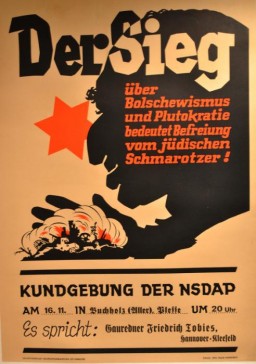
Soviet photographer Yevgeny Khaldei views the destruction of Budapest from a rooftop. Budapest, Hungary, February 1945.
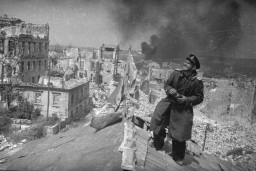
Soviet photographer Yevgeny Khaldei stands on top of the Brandenburg Gate in Berlin where he, along with a few Soviet soldiers, raised the Soviet flag. Berlin, Germany, May 1945.
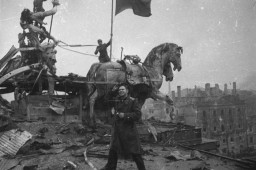
A unit of Soviet soldiers walks along a narrow strip of land that juts into the water while on a reconnaissance mission in Murmansk. Photograph taken by Soviet photographer Yevgeny Khaldei. Murmansk, Soviet Union, 1941.
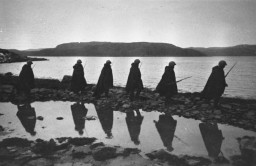
Soviet planes fly over the destroyed Reichstag (German parliament) building in Berlin. Photograph taken by Yevgeny Khaldei. Berlin, Germany, ca. April 1945.
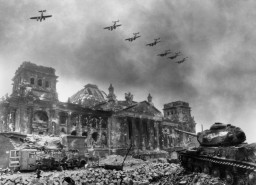
Portrait of a Soviet soldier standing on a heavily damaged street in Budapest. Photograph taken by Soviet photographer Yevgeny Khaldei. The location is Apponyi Square. On either side of the street are the ruins of the Clotild Palaces. In the background is the Erzsebet (Elizabeth) bridge. Budapest, Hungary, 1945.
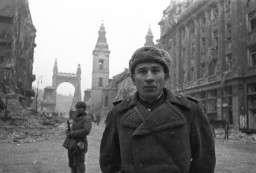
Soviet tanks roll down a street in Vienna during the Soviet conquest of the Austrian capital at the end of World War II. Photograph taken by Yevgeny Khaldei. Vienna, Austria, 1945.
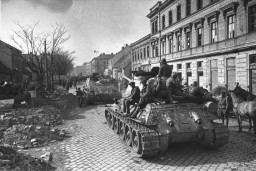
We would like to thank Crown Family Philanthropies, Abe and Ida Cooper Foundation, the Claims Conference, EVZ, and BMF for supporting the ongoing work to create content and resources for the Holocaust Encyclopedia. View the list of donor acknowledgement.